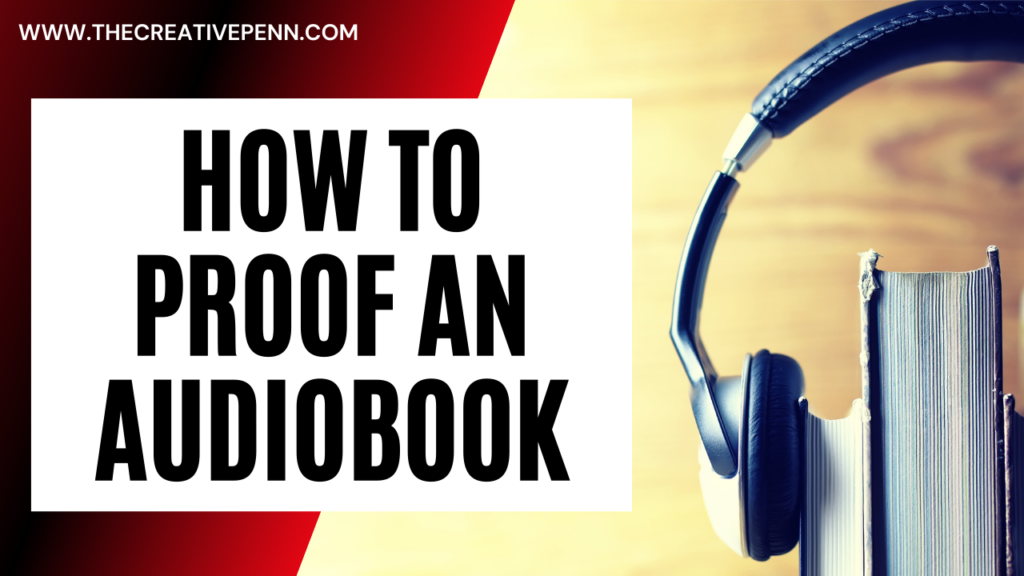Audiobooks are a rapidly growing market for authors in multiple genres — but the process of getting an audiobook to production is detailed and proofing your audio files is an important aspect. In this article, Maxwell Cantrell outlines some tips for proofing your audiobook.

A narrator creates the raw audio files by recording hours of audio and then edits these, sometimes across multiple recording sessions, to create the finished product. There are inevitable issues with editing audio, just as there are with editing your manuscript, so it’s critical to proof-listen to the files before they are approved on whatever platform you use to publish. After all, readers don’t want to listen to crackles, faulty delivery, poorly-spliced audio clips, mispronunciations, and repeats.
I’m an audio proofer. My job is to listen to audiobooks and catch mistakes so that readers don’t ever hear them. Here are some tips and tricks I use to make every book sing.
(1) Set yourself up for success
Before you start to proof, find a quiet environment, and ask the other people in your house to be quiet while you do your job. If you don’t have a quiet room, proof in your closet underneath a blanket, or anywhere that helps you control the audio environment.
I suggest getting some form of noise-canceling, high-quality headphones. These can help you find where audio interference is coming from during your proofing, and make the experience more pleasant in general.
(2) Listen along with the manuscript
Keep the latest version of the text in front of you as you listen and read along with the manuscript to help you focus on the text, and assist you in finding small or technical errors.
This is important as it allows you to find places where the narrator may have read the wrong line or used the wrong word, repeated a section, or edited something incorrectly. In some instances, the new line or mistaken word might contradict your vision or other parts of the story, so it’s important to fix. However, sometimes you might find small text changes or word omissions that don’t change the meaning of the text so you’re happy to leave them in.
(3) Check for audio artifacts
One of your jobs is looking for audio interference, which can be complicated by technical problems that lead to false alarms. Download chapters onto your desktop to listen to them using Windows Media Player, VLC Media Player, Audacity, or something similar. These software tools are useful because they don’t generate audio interference, and you can see the audio waveform with clarity. This helps you find technical errors more easily.
When you proof a segment with frequent audio artifacts, don’t read along with the manuscript. Instead, concentrate on background sounds like skips, pops, or odd noises. Some audio artifacts are hard to find or might be quiet, so to flag them all, you may have to ignore the text and focus purely on the background audio. Once you’ve flagged all the artifacts in a segment, listen again to the words with the book in front of you to catch any inconsistencies.
(4) Note down issues with time stamps
Your audiobook narrator/producer will need to know the chapter and the time stamp as well as the details of the issue, for example:
Chapter 1 – 9:23 – clean not clear. “It was made of thick metal, but its heart had burned clean through with his repeated attack.”
List these out in the most appropriate way as you listen. This might be a Word document, Google Docs, or a spreadsheet. You will need to provide this feedback to your narrator so that they can fix the various chapters. Then you’ll need to recheck that it’s been fixed after a new file has been provided.
(5) Be constructive in your feedback
An audiobook is a collaboration and an adaptation. It is a different product to the written word and the narrator is essentially performing your book.
Your job as a proofer is to improve the audiobook within the constraints of the agreed performance, not to criticize any mistake the narrator makes, or decide that you want something different altogether. No matter how good a narrator is, mistakes are bound to happen, so note them impartially and kindly, rather than get personal, even if you’re frustrated by the frequency or types of mistakes.
Audio proofing is a vital job in the production of audiobooks, and hopefully, these tips will help you catch a couple more errors and improve the quality of your finished product.
 Need help with your audiobook proofing?
Need help with your audiobook proofing?
If you’d rather outsource your audiobook proofing, I’m available to help. More details at www.MaxwellCantrell.com/works
“Maxwell has proof-listened to several audiobooks for me and I’m impressed by his attention to detail, his fast turnaround, and his helpful notes on what needs to be fixed. There are so many things to do as an author, so it’s great to have someone to help with this time-consuming task.” – Joanna Penn, The Creative Penn
The post How To Proof Listen To An Audiobook first appeared on The Creative Penn.
Go to Source
Author: Joanna Penn
